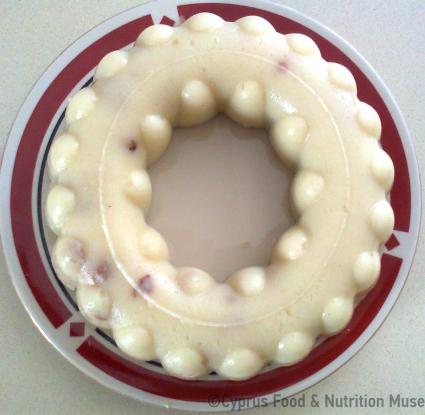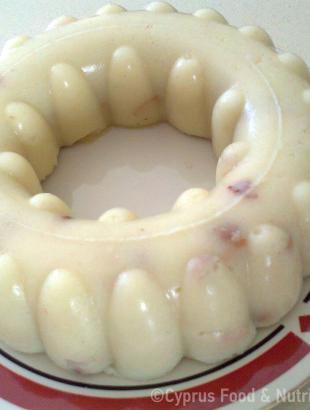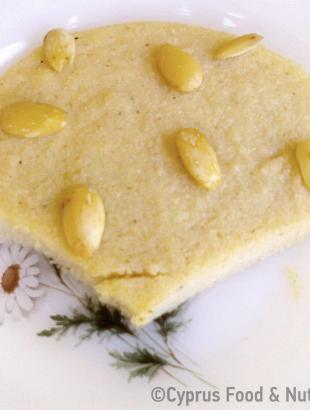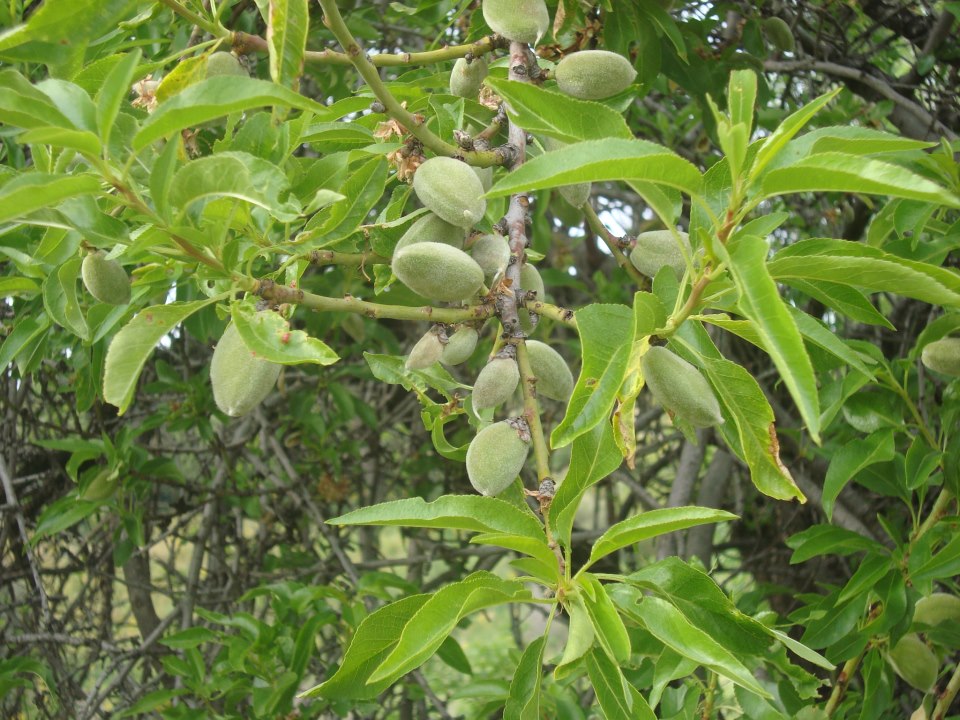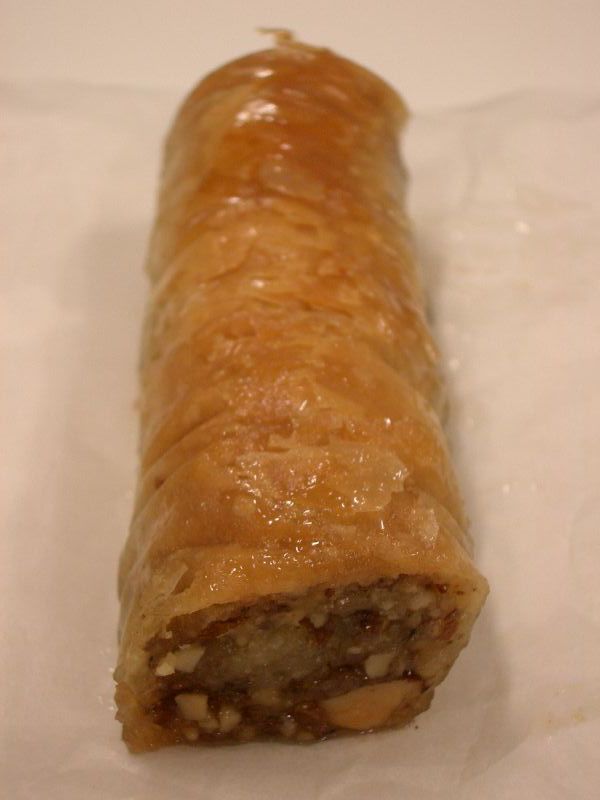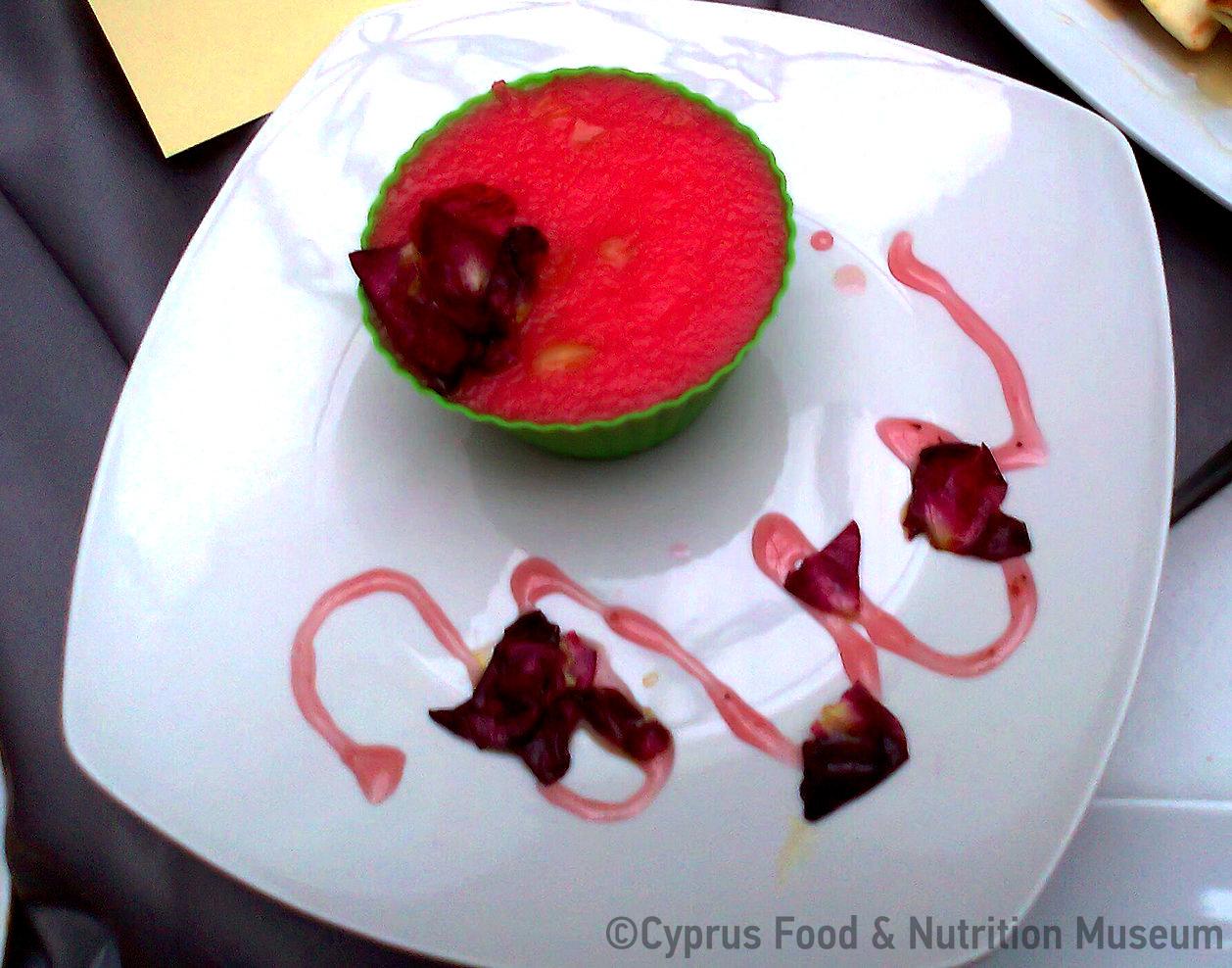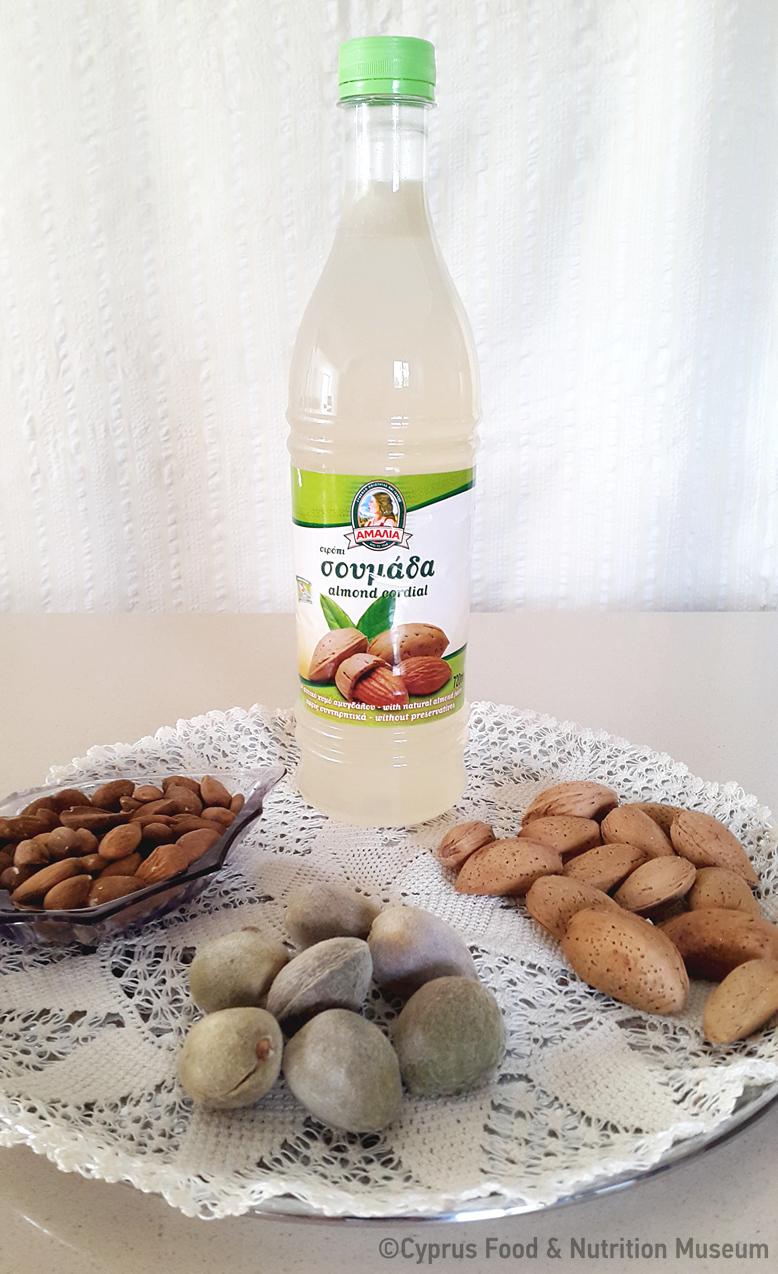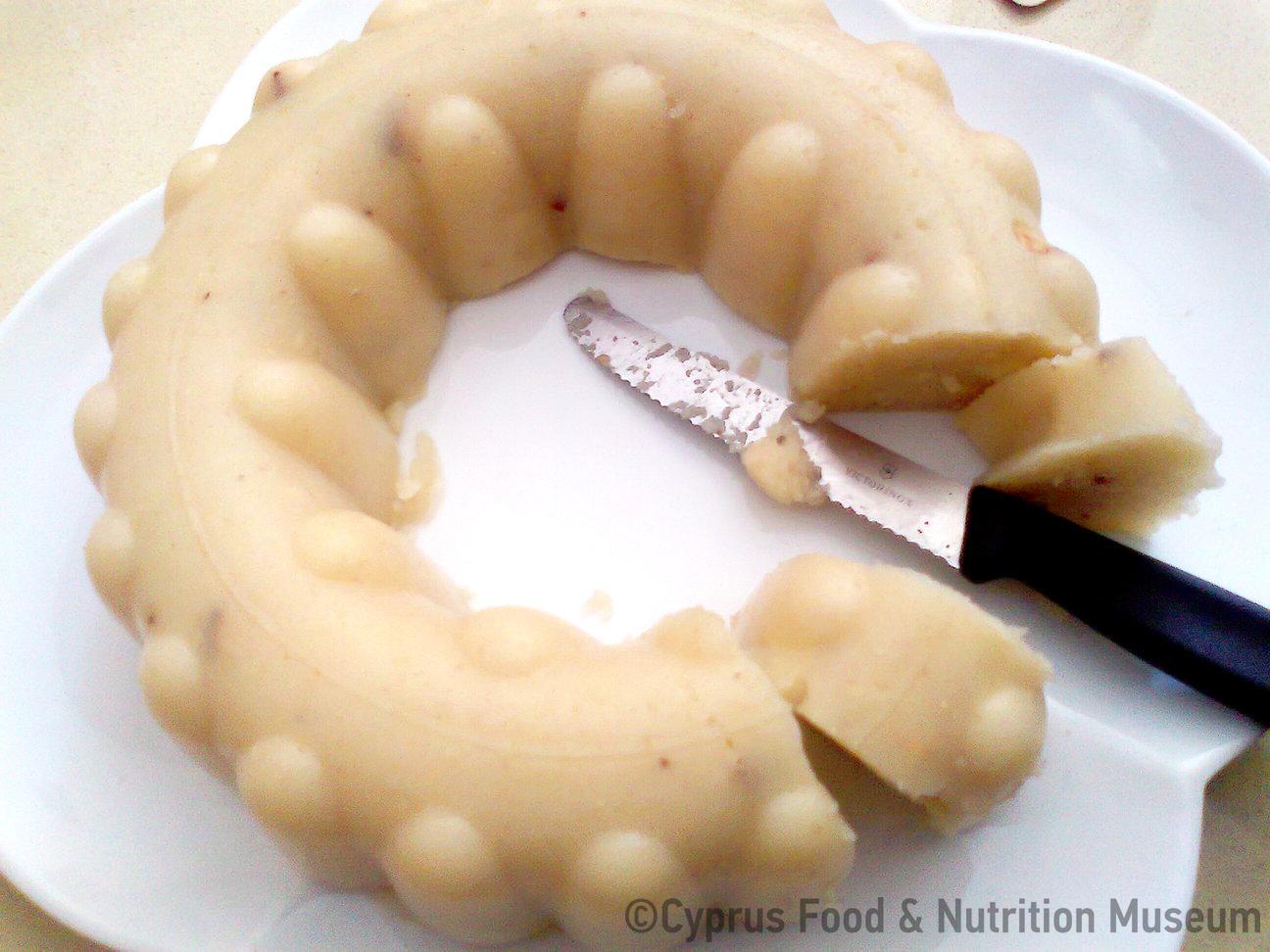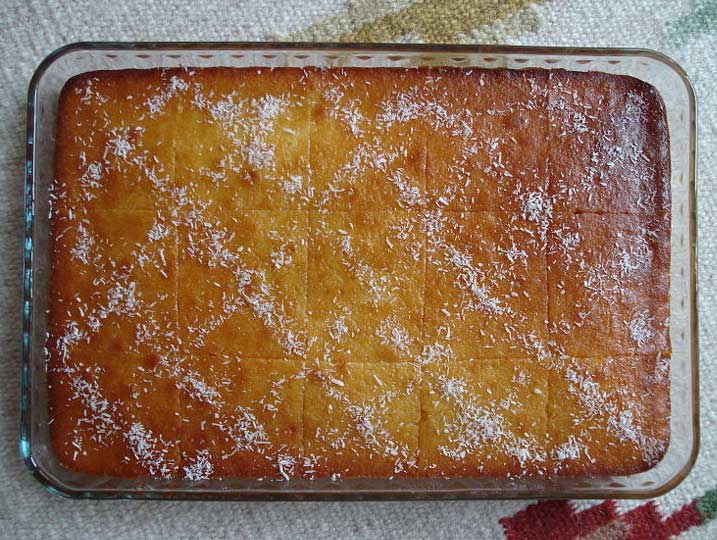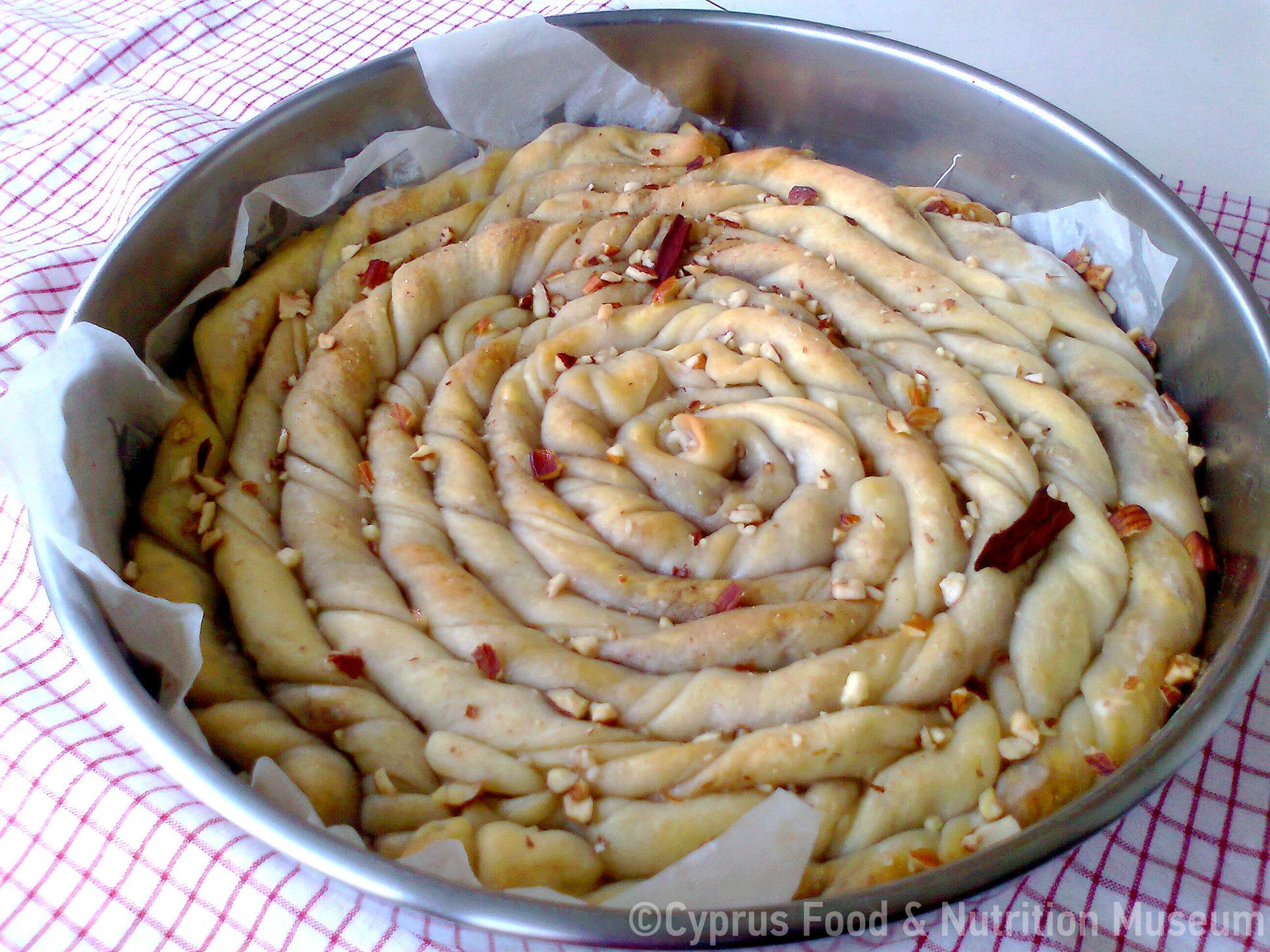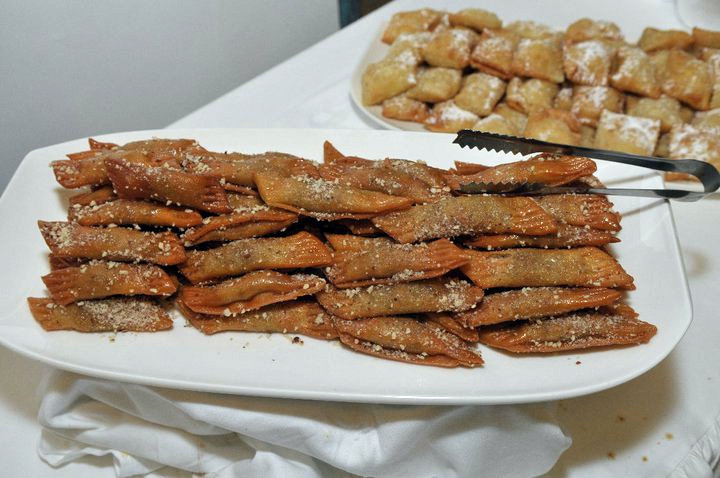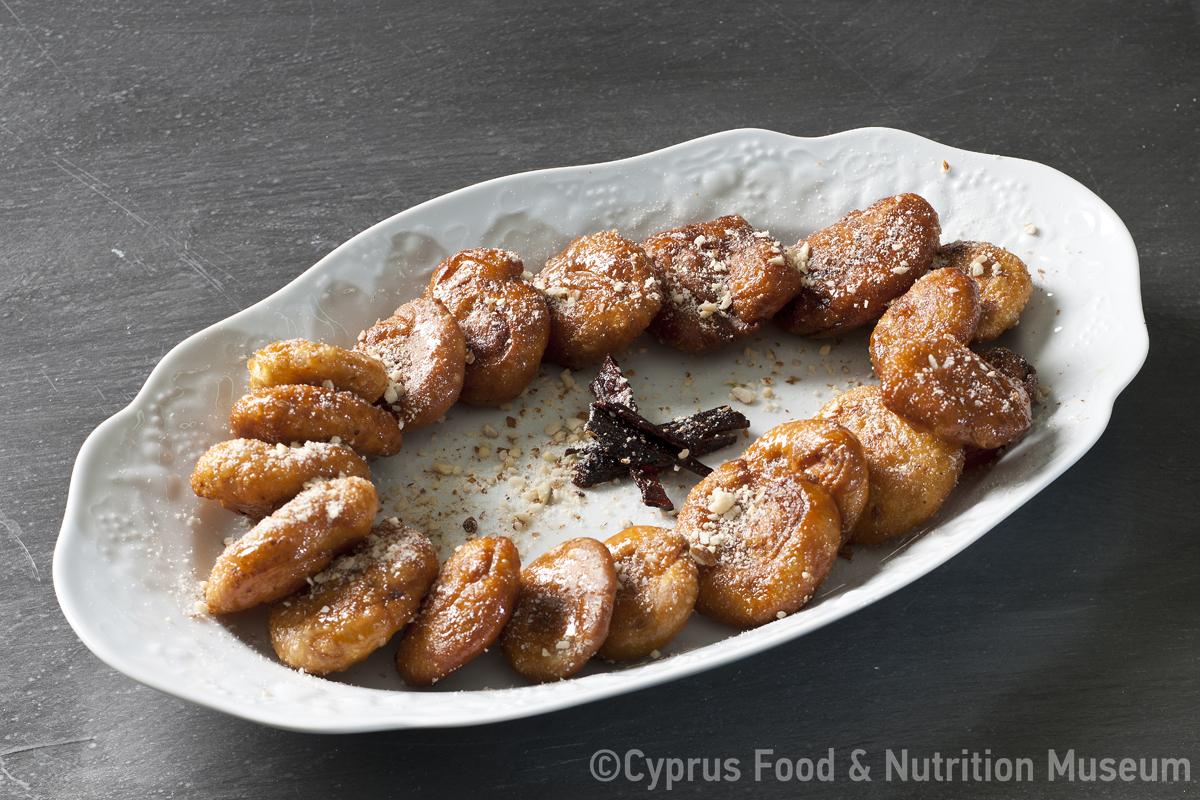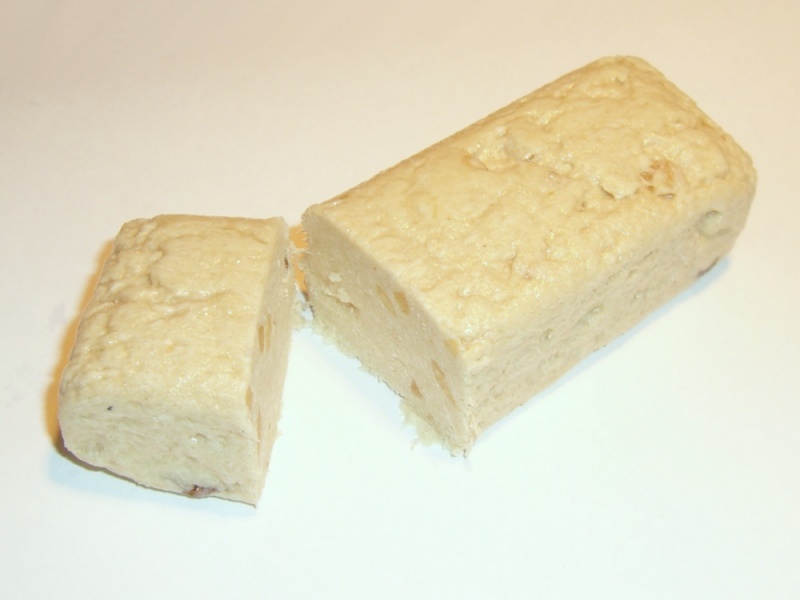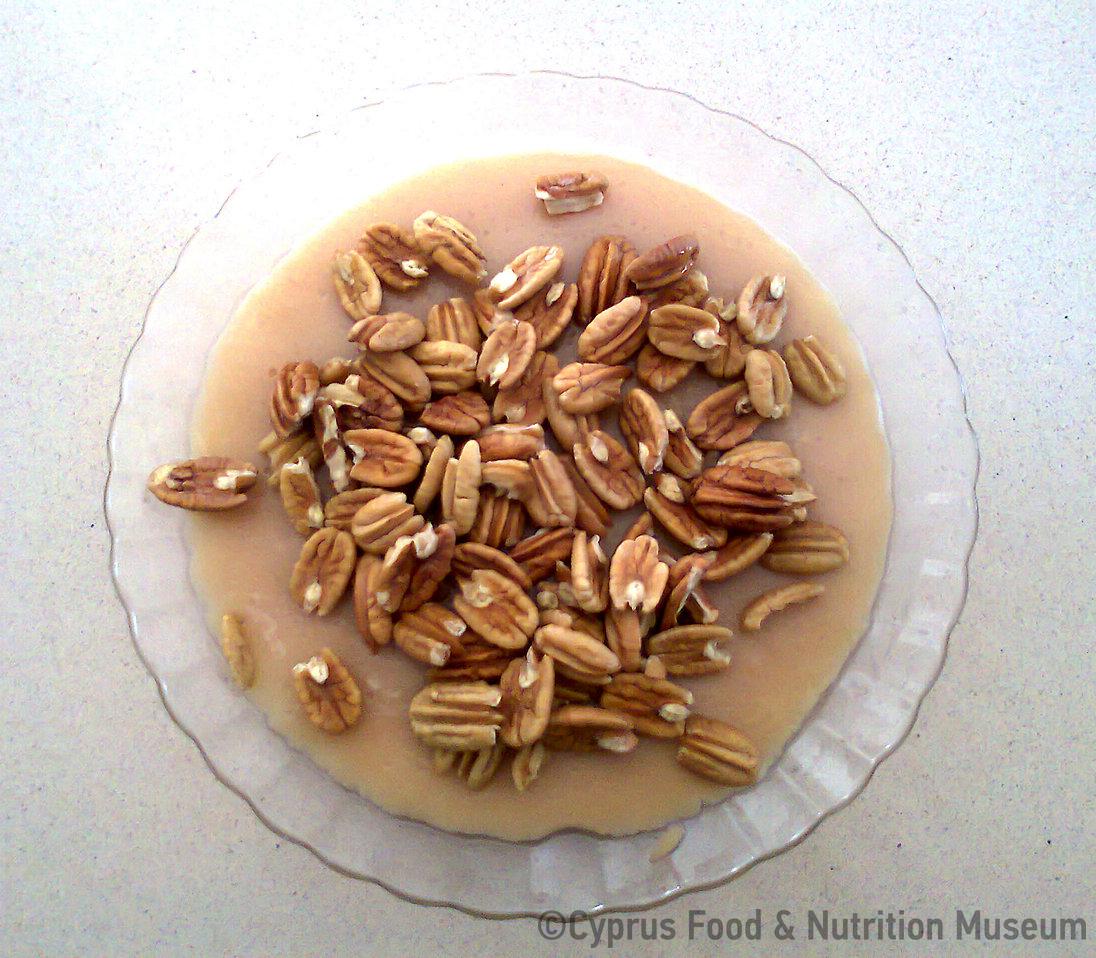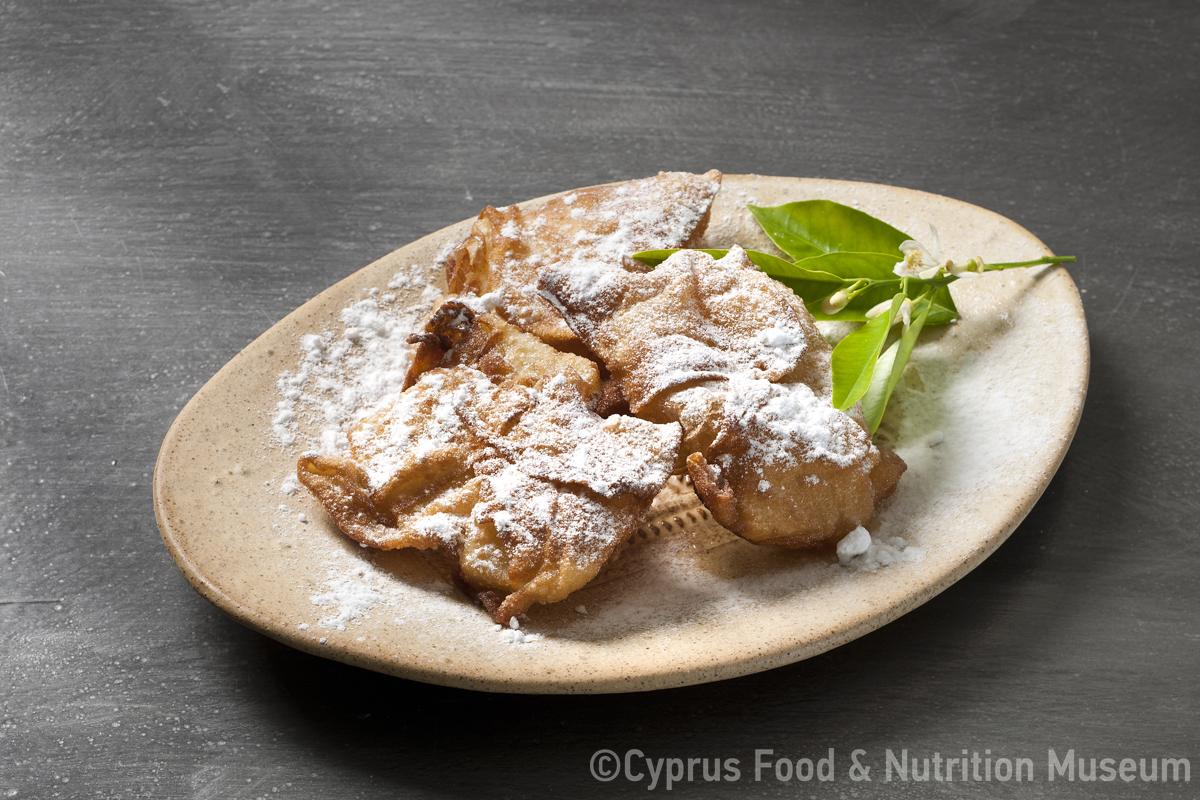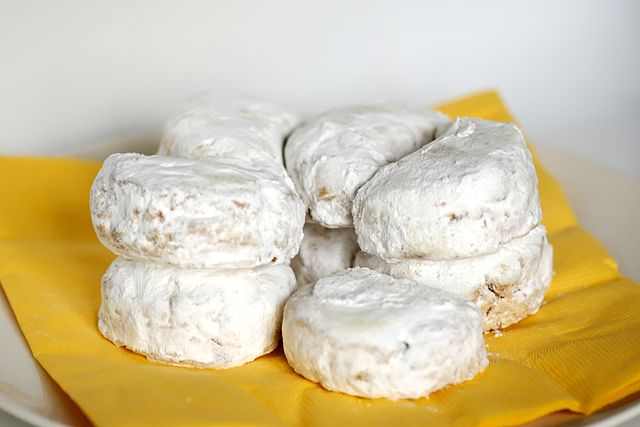This delicacy is perhaps the most beloved and characteristic dessert of the fasting period.
Name - Recipe
Χαλβάς κατσαρόλας. Sweet made of semolina, almonds and syrup, flavoured with cinnamon, cloves and rose water.
Version A
3 glasses of semolina
2 glasses of sugar
1 glass of oil
7 glasses of water
2 glasses of chopped almonds
1 cinnamon stick
2 cloves
Version B
¼ cup of peanut oil
1½ cup semolina
1 glass of blanched almonds
1 glass of sugar
5 glasses of water
3 tbsp rosewater
Cinnamon and cloves
Version A
Prepare the syrup by boiling the water, cinnamon, cloves and sugar for 5-8 minutes. Put the oil and the almonds in a saucepan and lightly toast them. Add the semolina and fry it too until it turns a little golden brown. Add the syrup and cook, stirring until it is absorbed. Pour the halouvas into a deep dish and when cool, cut into rectangular pieces and serve. (Mary Maki, 67 years old, Asgata, Limassol)
Version B
In a saucepan, bring the oil to a boil, add the almonds to brown and then the semolina. Add the syrup that you have previously made in a small saucepan with the water, sugar, rose water, cinnamon and cloves. Stir well. When you see that the mixture does not stick to the pot and it is ready. Put it in a serving dish, smooth it out and decorate it with almonds. (Sotira Kyriakou, 36 years old, Dymes)
Cooking in a pot.
Functional and symbolic role
Usually prepared during fasting.
Additional information and bibliography
Oral testimonies: Sotiras Kyriakou, 36 years old, Dymes (see Kourri, P. and Lazarou, S. (eds.) (2007). Traditional recipes of the village of Kyperounda, unpublished data).
Mary Maki, 67 years old, Asgata, Limassol. Recorded by Elena Christou Maki, 2011.
Elena Christou Maki, Stalo Lazarou

